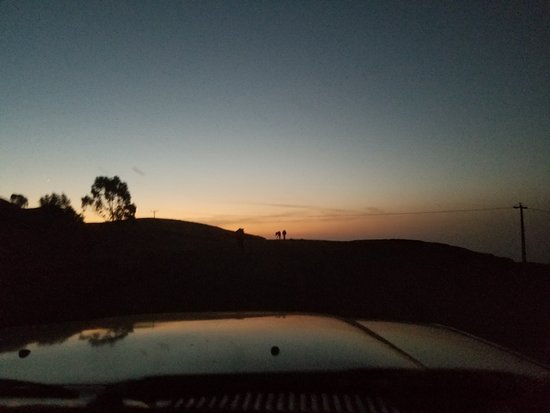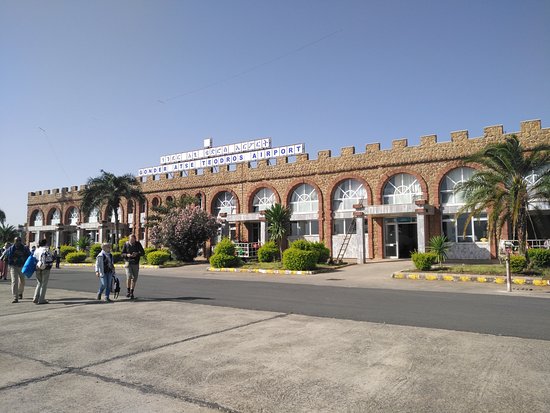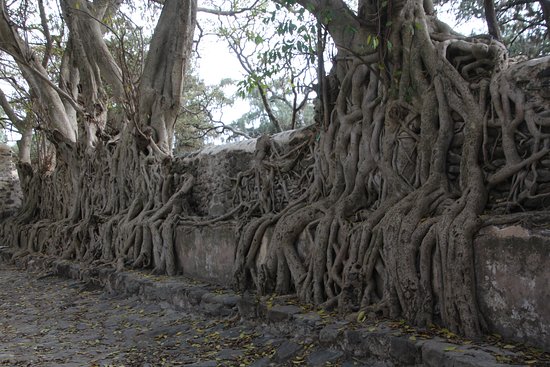What to do and see in Gonder, Ethiopia: The Best Places and Tips
Discover the best top things to do in Gonder, Ethiopia including Simien Mountains National Park, Debre Berhan Selassie Church, Fasil Ghebbi, Gondar, Fasiladas Bath Timket, Kuskuam Church, Ploughshare Women Crafts Training Centre.
Restaurants in Gonder
1. Simien Mountains National Park
Overall Ratings
4.5 based on 806 reviews
Simien Mountains National Park, in northern Ethiopia is a spectacular landscape, where massive erosion over millions of years has created jagged mountain peaks, deep Valleys and sharp precipices dropping some 1,500 m. The park is of global significance for biodiversity conservation because it is home to globally threatened species, including the iconic Walia ibex, a wild mountain goat found nowhere else in the world, the Gelada baboon and the Ethiopian wolf.
Reviewed By Chrisbeeoxford - Oxford, United Kingdom
If one wants to see the endemic mammal species one would need to stay 3 nights in the Lodge; one short visit is not enough to hunt for them in 400 square kilometres of difficult terrain. However a quick visit has its virtues; the scenery is magnificent, the flora is surprisingly similar to Scotland, the Gelado are there in their hundreds, and a few birds can be observed.
Beware if you cannot walk well. The tracks are down and up and can be steep.
2. Debre Berhan Selassie Church
Overall Ratings
4.5 based on 291 reviews
Reviewed By Robert937 - Rotterdam, The Netherlands
At first sight the church looks like a large barn strangely placed in an enclosure of walls with small towers amidst high trees. There used to be a church at this strategic hill top built in the 17th century, but it was destroyed. This building dates from 1880s, a time when Ethiopia was under attack by the Sudanese ansar followers of the Mahdi who wanted to establish an Islamic caliphate in the region (comparable to IS during our times). Initially these fanatic Islamic rebels fought British backed Turkic Egyptian rule of Sudan, but later turned against Christian Ethiopia as well.
For this reason you see the fortification surrounding the church. Twelve towers symbolizing the protection by the twelve apostles. The interior of the church is abundantly decorated, while the exterior has been kept rather low profile. A bit like similar churches that were built during Ottoman rule in Romania. I was not very impressed about the artistic quality of the frescos. It represents a kind of naieve art, that has its charm. You see scenes from the bible, but also many knights on horses with spears and swords fighting evil (no doubt Al Khalifa's troops). Satan as well is depicted with near him Christian martyrs. One whose head is chopped off, another one hanging upside down from a tree, and other horror scenes.
Remarkable: at the entrance to the church there is a sign in English urging visitors "who slept with your spouse or your spouse yesterday" (I hope they forgot the word today) and "ladies during manstration" not to enter.
Entrance fee for foreigners 100 ETB
3. Fasil Ghebbi
Overall Ratings
4.5 based on 261 reviews
A royal fortress-city dating back to the 16th-17th centuries demonstrates Hindu, Arabic and baroque influences.
Reviewed By Robert937 - Rotterdam, The Netherlands
17th century Castles made of stone in Africa are rare. The rocky structures within the so called royal enclosure remind you of mediëval Castles in Europe. It shows the Amhara people over 300 years ago had great skills. Having said that, the architecture of the remains of 6 Castles that were built over a period of some 150 years does not show a lot of progress. The design, the techniques and the materials used, remained the same. The Italians attempted to convert one of the Castles into a European style mansion.
The cages where lions were kept during the times of the last Emperor Haile Selassi also date from that period. Fortunately a recent plan to relocate lions there failed.
Entrance fee for foreigners 200 Birr (incudes entry to Fasilides bath down at the river). Services of a guide cost extra.
4. Gondar
Overall Ratings
4.5 based on 166 reviews
5. Fasiladas Bath Timket
Overall Ratings
4.5 based on 284 reviews
Reviewed By Tanja S - Addis Ababa, Ethiopia
We did not visit at Timkat. Sadly so. But even outside the Timkat Festival (19 January), it's well worth a visit, history abounding. The bath was already in use in 1699!! Emperors came here to celebrate Timkat in the 17th century, which perhaps explains the building of the pavilion, says my guidebook. Today, it's calm and quiet, with lovely trees and lots of tree roots - (reminding me of the Ta Prom Temple in Angkor Wat, Cambodia (Tomb Raider film). We visited Fasil's Bath on our way back from the Qusquam Palace. Otherwise, it's only a short taxi ride from down town Gondar. Pool was filling up for the Festival the day we visited. There's a good public toilet on site as well. Also VIP. Price is included in ticket for Fasil Ghebbi. No discounts. No need to skip the line. There is no line. No need for a headcover, it's an history site, not a building site.
6. Kuskuam Church
Overall Ratings
4.5 based on 5 reviews
Reviewed By Vacation Ethiop... T - Addis Ababa, Ethiopia
offering wonderful insight into the Amhara culture and the traditional agricultural methods still in use today. After arrival in Gondar and brief check-in to hotel, the afternoon will be spent exploring the sites of Gondar, including a visit to the Royal Enclosure, with six Castles and several other buildings. Additionally, visit Fasilidas’s Pool, still used for Timket celebrations today and the Debre Birhan Selassie church, with the most famous ceiling in Ethiopia.
7. Ploughshare Women Crafts Training Centre
Overall Ratings
4.5 based on 4 reviews
Reviewed By Michael W - London, United Kingdom
This shelter and training centre for women -- directly opposite the old Jewish settlement of Wolleka -- provides a place for them to learn ceramic and textile crafts. The ceramics are made on the spot in workshops, with equipment from a number of foreign charities in Japan and elsewhere. Items are for sale and support the work of the centre. It is a quiet and pleasant place to stop for an hour or more. The general manager is Tesfalem Abera.







